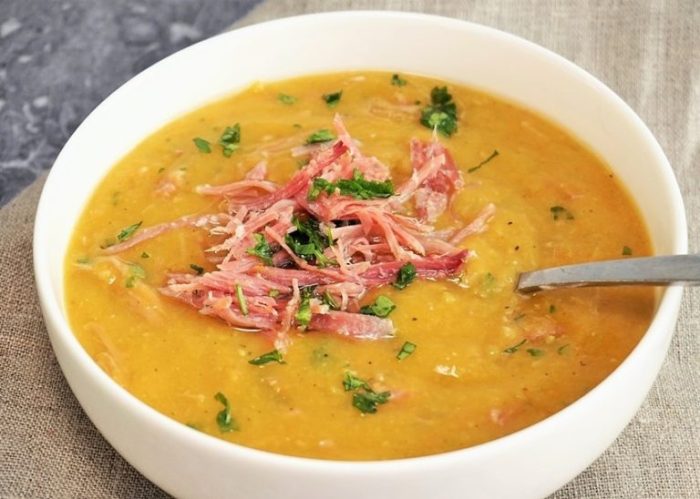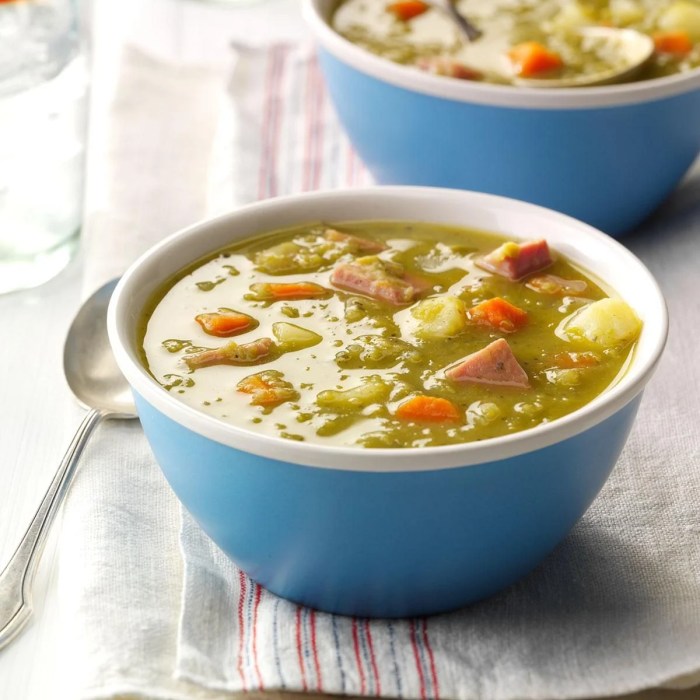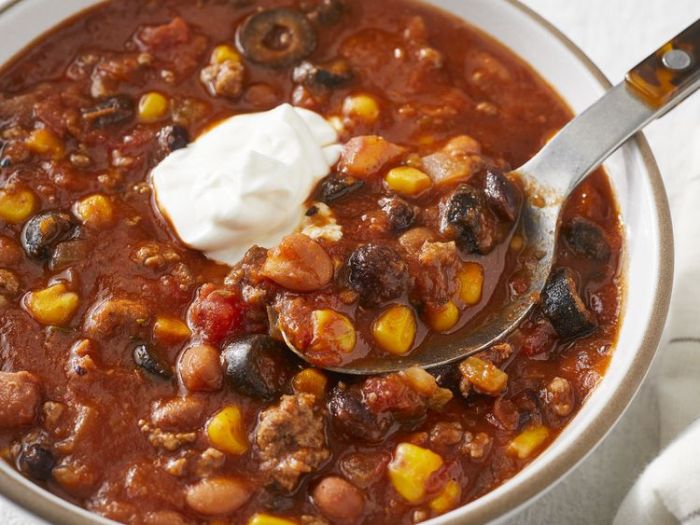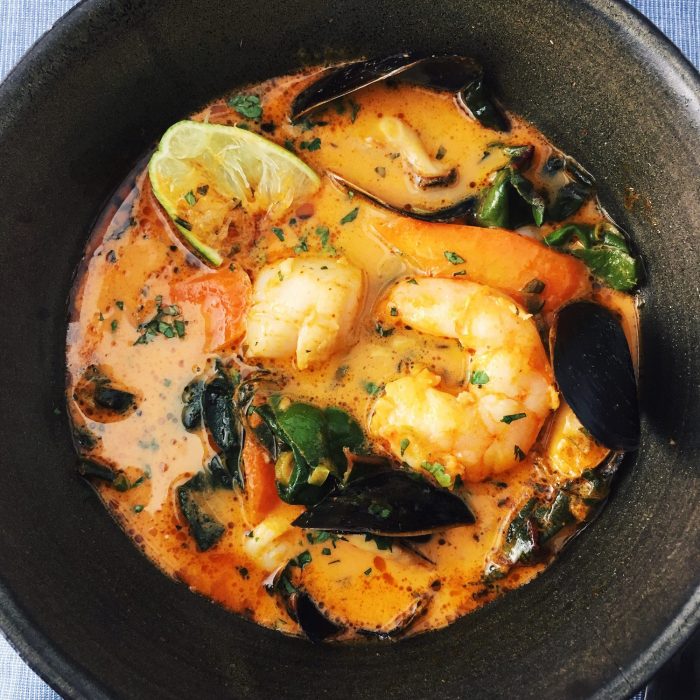Ingredient Variations in Pea and Ham Soup
Pea and ham soup best recipe – The beauty of pea and ham soup lies in its adaptability. Ingredient substitutions offer a pathway to personalize this classic dish, allowing for experimentation with different flavor profiles and textures. This section explores variations in peas and ham, detailing their impact on the final product.
Finding the best pea and ham soup recipe often involves experimenting with different techniques. For a flavorful twist, consider incorporating elements from other hearty soups; you might find inspiration in the robust vegetable base of a olive garden tuscany soup recipe , adapting its rich tomato and herb profile to complement the peas and ham. Ultimately, the perfect pea and ham soup is a matter of personal preference and culinary exploration.
Pea Alternatives and Their Effects, Pea and ham soup best recipe
| Ingredient | Substitution | Impact on Flavor | Impact on Texture |
|---|---|---|---|
| English Peas | Snow Peas | Subtle sweetness, slightly less intense pea flavor. | Crisper, less creamy texture. |
| Frozen Peas | Fresh Peas | Brighter, more vibrant pea flavor. | Slightly firmer, potentially less uniform texture if not cooked properly. |
| Split Peas | Green Peas | More earthy and robust flavor, less delicate sweetness. | Thicker, potentially mushier consistency. |
| Dried Peas | Frozen Peas | Similar flavor, but requires longer cooking time. | Potentially more mushy if overcooked. |
Ham Variety and its Influence
The type of ham significantly impacts the soup’s richness and overall taste. Smoked ham imparts a smoky depth, bone-in ham adds a richer, more savory broth, while diced ham offers convenience and a more uniform distribution of flavor throughout the soup.
For example, using a smoked ham hock will yield a soup with a deep, smoky character, while diced ham from a pre-cooked ham provides a simpler, more readily available option that still delivers a satisfying ham flavor. Bone-in ham contributes more collagen, resulting in a thicker, richer broth.
Fresh vs. Frozen Peas: A Textural Comparison
While both fresh and frozen peas can be used, they offer distinct textural outcomes. Fresh peas retain their bright green color and a slightly firmer texture when cooked properly. Frozen peas, on the other hand, can become slightly softer and potentially lose some of their vibrant color if overcooked. However, frozen peas offer convenience and are readily available year-round.
Stock Selection and Preparation: Pea And Ham Soup Best Recipe
The foundation of a great pea and ham soup is its stock. Homemade stock offers superior depth of flavor compared to store-bought broth. This section details the benefits of homemade stock and provides a recipe for a flavorful base.
Homemade Stock Recipe for Pea and Ham Soup
A homemade chicken or vegetable stock elevates the soup’s flavor complexity. The following recipe provides a flavorful base for a superior pea and ham soup.
- Ingredients: Chicken carcass (or vegetable scraps), 8 cups water, 2 carrots (chopped), 2 celery stalks (chopped), 1 onion (quartered), 2 bay leaves, 1 tsp black peppercorns.
- Instructions: Combine all ingredients in a large stockpot. Bring to a boil, then reduce heat and simmer for at least 2 hours (longer for richer flavor). Strain the stock through a fine-mesh sieve, discarding solids.
Stock Type Comparison: Chicken, Beef, and Vegetable
Chicken stock lends a savory, subtly sweet base. Beef stock offers a bolder, more intense flavor, potentially overpowering the delicate pea flavor. Vegetable stock provides a clean, lighter taste, ideal for those seeking a vegetarian option or a less intense flavor profile. The choice depends on personal preference and desired flavor profile.
Cooking Methods and Techniques
Pea and ham soup can be prepared using various methods, each impacting cooking time and the final texture. This section explores three distinct approaches.
Cooking Method Comparison
| Method | Cooking Time | Advantages | Disadvantages |
|---|---|---|---|
| Stovetop | 45-60 minutes | Easy to monitor, allows for adjustments during cooking. | Requires more hands-on attention. |
| Slow Cooker | 6-8 hours on low | Minimal effort, develops deep flavors. | Longer cooking time, less control over cooking process. |
| Pressure Cooker | 20-30 minutes | Fast cooking time, tender ingredients. | Requires specialized equipment. |
Achieving Creamy Texture
A creamy texture can be achieved through blending a portion of the soup, incorporating cream or crème fraîche, or by creating a roux and whisking it into the soup.
Blending creates a smooth, velvety consistency. Adding cream enhances richness and creaminess. A roux, a mixture of butter and flour, acts as a thickening agent, adding a subtle nutty flavor.
Flavor Enhancement and Seasoning
Strategic use of herbs, spices, and seasonings is crucial for creating a well-balanced and flavorful pea and ham soup. This section explores flavor enhancement techniques and the importance of proper seasoning.
Key Herbs and Spices

Source: tasteofhome.com
Classic pairings include bay leaves, thyme, black pepper, and parsley. These herbs complement the ham and pea flavors without overpowering them.
- Bay Leaves
- Thyme
- Black Pepper
- Parsley
Flavor Variations

Source: moorlandseater.com
Experimentation with spices like smoked paprika or curry powder adds depth and complexity. Fresh herbs such as rosemary or sage offer aromatic notes.
Importance of Seasoning

Source: tmbi.com
Seasoning should be layered throughout the cooking process. Start with salt and pepper in the beginning, then adjust as needed towards the end, taking into account the saltiness of the ham.
Serving Suggestions and Presentation
The final touch is presentation. This section provides serving suggestions and ideas for creating a visually appealing dish.
Serving Suggestions
- Serve with crusty bread for dipping.
- Garnish with fresh parsley or chives.
- Pair with a side salad for a balanced meal.
Visual Presentation
Serve the soup in warm, rustic bowls. A simple garnish of fresh parsley sprigs adds a pop of green, contrasting beautifully with the creamy soup. Consider a swirl of cream on top for extra visual appeal.
Crusty Bread Recipe
A simple crusty bread perfectly complements the soup. Recipes for crusty bread are readily available online and in cookbooks; the key is to achieve a crisp crust and a soft, slightly chewy interior.
Query Resolution
Can I use leftover ham bone for stock?
Absolutely! A ham bone adds incredible depth of flavor to your stock. Just be sure to simmer it gently for several hours to extract maximum flavor.
How can I thicken my pea and ham soup without a roux?
You can thicken the soup by pureeing a portion of it before returning it to the pot. Alternatively, a cornstarch slurry (cornstarch mixed with cold water) can be whisked in towards the end of cooking.
What are some vegetarian substitutions for ham?
Smoked tofu or mushrooms can add a savory depth, while a vegetable broth base keeps the recipe vegetarian-friendly. Consider adding some smoked paprika for a smoky ham-like flavor.
How long can I store leftover pea and ham soup?
Store leftover soup in an airtight container in the refrigerator for up to 3-4 days. Reheat gently on the stovetop or in the microwave.


